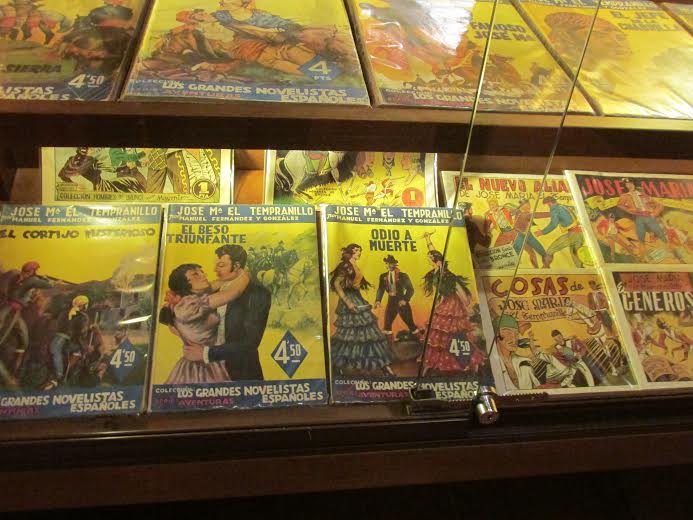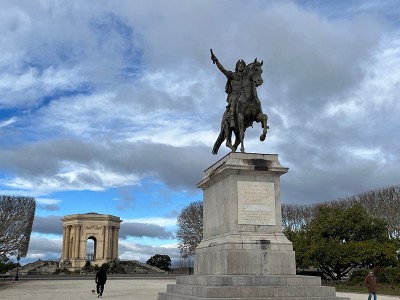December 26, 2025 04:24 am (IST)

Ballad of the bandits
A museum entirely devoted to bandits and their deeds, not always vile, can be found in Ronda, a historic town in Spain's Andalusia region. Ranjita Biswas visits this unique centre
The ravines of the Chambal valley in Madhya Pradesh have spawned many stories, of legendary figures, gang-wars, the underprivileged running away to the hills and becoming dacoits, etc. Tarun Bhaduri’s (Jaya Bhaduri’s father) Bengali book Abhishapta Chambal (the curse the Chambal) gave a glimpse of the reality in these hills. Not to forget, Shekhar Kapur’s Bandit Queen on Phoolan Devi which was a sheering comment on the gender equation in this craggy region.
But can you imagine a museum devoted to their deeds, or their life as the persecuted?
There is one such in Ronda in the Andalusian region in southern Spain. Called ‘Museo del Bandolero’ (museum of bandits ), it is probably the only one of its kind in the world. Opened in 1995, the Bandit museum is located in a century old house on the main square of the historic city of Ronda.
Ronda is built on top of a gorge. It is now a Unesco heritage site.The place was used as a fortified town by different regimes as it is surrounded by Serranía de Ronda (Ronda mountain range) . The caves there served as an ideal hideout for those fleeing the law, just as Chambal hills were.
You may wonder as to why glorify these bands of outlaws living on the fringe of society and dedicating a museum to them. Jesus Almazan Gonzalez, collector and owner of the museum, points out that the word bandolero in the Spanish context has a romantic connotation – like Robin Hood. Their escapades, stories of their lifestyle are part of the Andalusia’s history of the 18th and 19th century and one just cannot brush it away. So he started collecting the memorabilia connected with the ‘classic’ period of the bandolero history from different sources, newspaper cuttings, weapons, photos, etc. What started as a personal passion became larger and larger with contributions from others and ultimately it resulted in the museum in the heart of Ronda’s historical town,
The classic conception of the bandolero was ‘at times cruel and violent, and at others engaged in active struggle in the cause of the poor and downtrodden’ adding to their image of fighting for justice for the poor even while looting the rich. One can well imagine that the legend of the Zorro character created in 1919 by writer Johnson McCulley in America, later made into a couple of successful Hollywood movies, could well be moulded in this bandolero image in the wilderness of Andalusia.
During the Romantic period many writers, especially from England came to Andalusia via Gibraltor which is still a British colony. They were enamoured by the folktale-like stories about the bandoleros ; some even went to meet the outlaws, and their legends grew as the writers wrote about them.
In this museum some 1,390 items associated with the bandits of the region are displayed in five galleries. Books, weapons, documents, clothing, prints, lithographs, official stamps, press reports, ballads, photographs, paintings, comic books, trading cards, films, etc. are displayed here. There are also lifelike figures of bandits in their typical dress and their cave dwelling, to depict the era.
Many legendary bandits figure in the collection of the museum. For example, Jose Maria Hinojosa the 'El Tempranillo' the king of Sierra Morena. He was considered as a ‘local Robin Hood’. He had to become an outlaw due a sad episode in his life, possibly homicide. But as far as the Andulasians of the day were concerned in the 19th century he was a ‘model bandit’. According to records he was handsome, wore good clothes and a velvet jacket to boot, and rode a cream-coloured horse. Legend has it that when he stopped a coach- he lorded over all the thoroughfares anyway, he held out his hand to the lady passengers to help them alight and let them rest in the shade till the ‘the business’ was over.
There is also this story of him complimenting a lady that ‘A hand as beautiful as yours doesn’t need adornment’ all the while relieving her of the bracelets and rings. But if it was family jewellery he never touched them; he even left some money for the travellers so that they could at least reach the next town. Later he gave up his life as a bandit and joined the government but was killed by a treacherous bandit.
Then there was José Ulloa Tragabuches, a gypsy and a famous bullfighter who became an outlaw when he found his ife was having an affair and killed her lover. The last bandolero of this region was José Mingolla Gallardo, apoacher, who died in 1934.
No wonder comic books were written about these romantic figures.
Today, when you travel around in air-conditioned buses and hop on and off sight-seeing as a modern day traveller, suddenly a place like the bandolero museum of Ronda pops up and you step into an unexplored terrain of local history.
Support Our Journalism
We cannot do without you.. your contribution supports unbiased journalism
IBNS is not driven by any ism- not wokeism, not racism, not skewed secularism, not hyper right-wing or left liberal ideals, nor by any hardline religious beliefs or hyper nationalism. We want to serve you good old objective news, as they are. We do not judge or preach. We let people decide for themselves. We only try to present factual and well-sourced news.
Support objective journalism for a small contribution.
Latest Headlines
Dreams took flight: Children of Masti Ki Pathshala experience the joy of flying with Air India Express
Wed, Dec 24 2025
Big boost for flyers in 2026! IndiGo launches direct Delhi–London Heathrow flights from this date
Wed, Dec 24 2025
Ready for India’s first nature-themed airport terminal in Guwahati? PM Modi shares first glimpse
Fri, Dec 19 2025
You won’t believe which ‘clean and pristine’ Kerala village Anand Mahindra just visited!
Mon, Dec 08 2025






